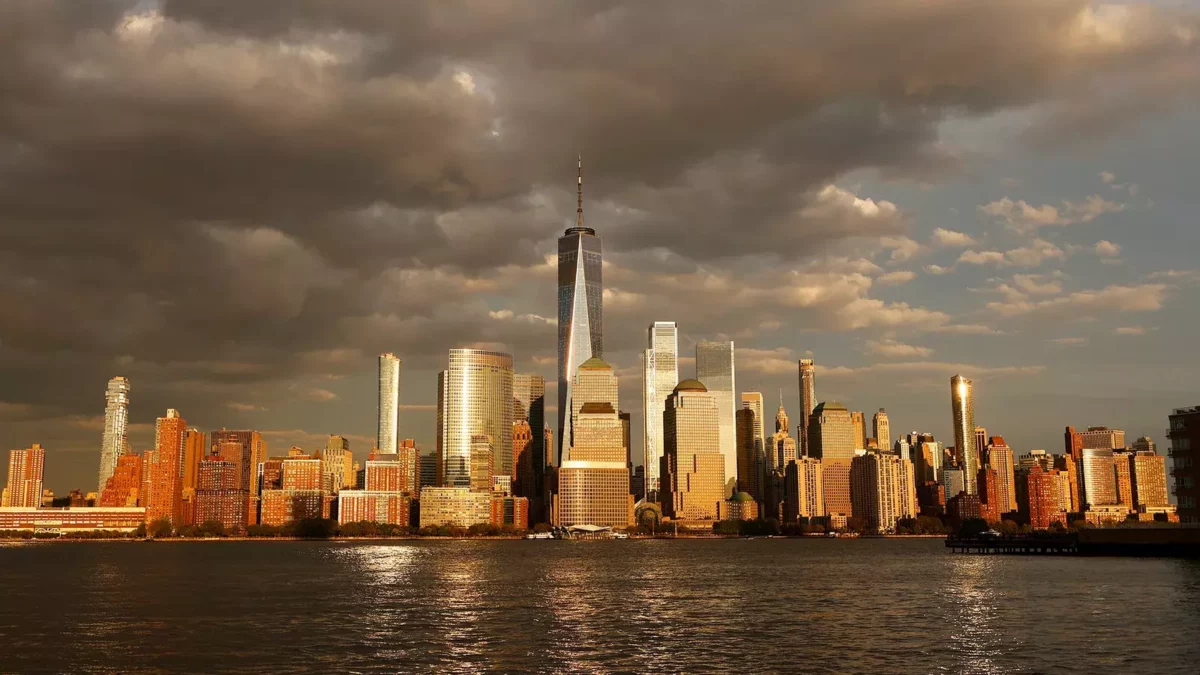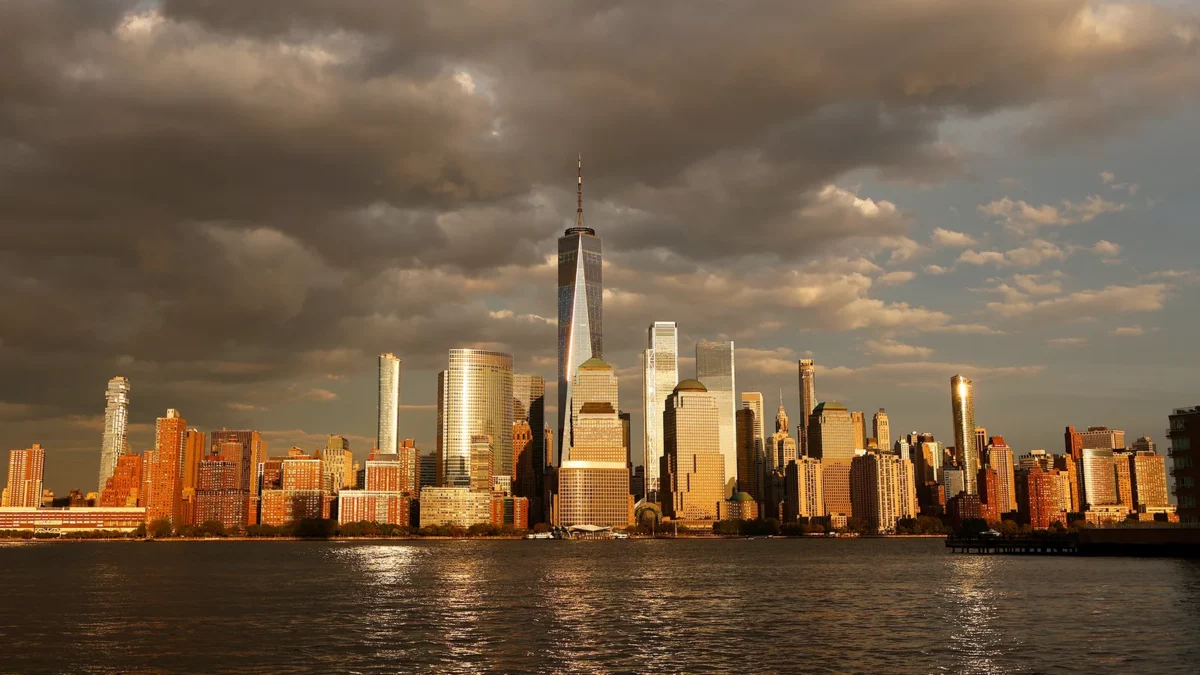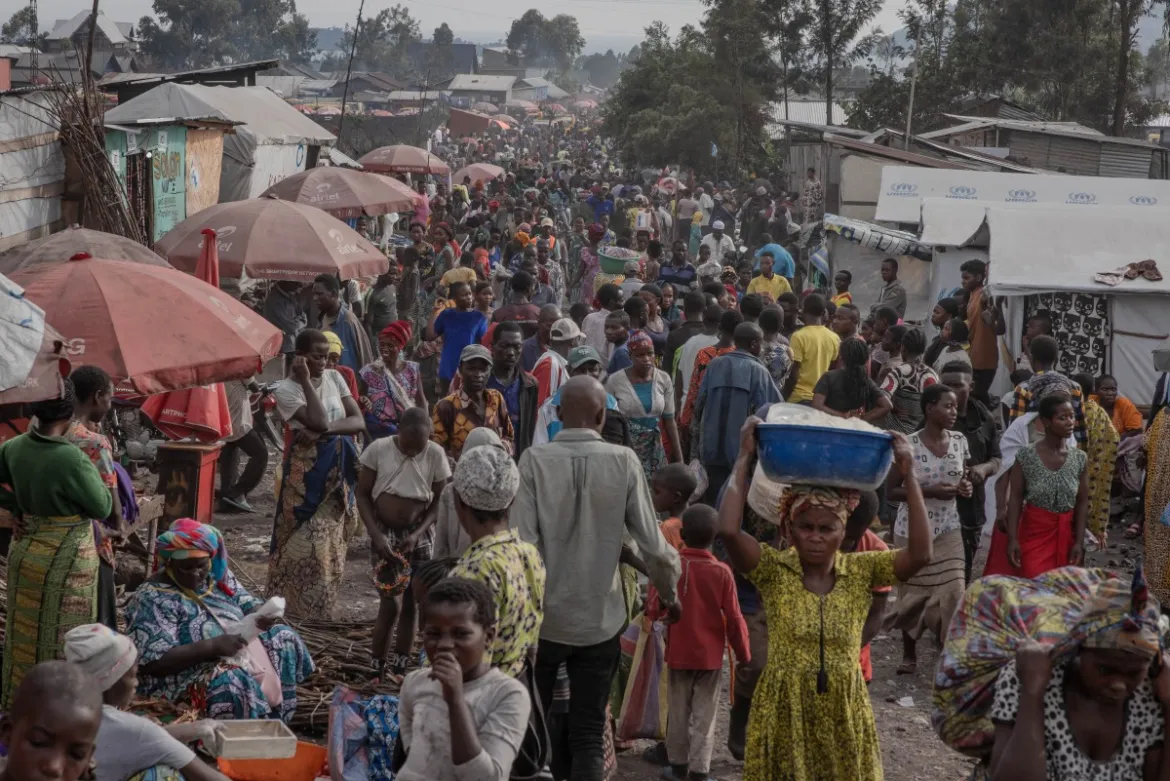In a race against time, New York City teeters on the brink of disaster as the weight of its buildings triggers a relentless sinking phenomenon, while rising sea levels and extreme weather loom.
With projections indicating a rise of 8 to 30 inches in sea levels by 2050, the situation becomes even more precarious.

Furthermore, scientists predict an increase in extreme rainfall events such as hurricanes and nor’easters as a result of the climate crisis. While the city is not yet in immediate danger of being submerged by the ocean, heavy rainfall has already caused flooding in certain areas, exacerbated by the effects of urbanization.
“But we’ve had a couple of major hurricane events with Sandy and Ida in New York where heavy rainfall caused inundation in the city, and some of the effects of urbanization have allowed water to come in.” said Tom Parsons, a research geophysicist at the US Geological Survey.
The study, led by Tom Parsons, published in the journal Earth’s Future, emphasizes the need for measures to mitigate these hazardous impacts.Parsons and his team calculated the weight of the approximately 1,084,954 buildings in New York City, amounting to a staggering 762 billion kilograms, equivalent to around 1.9 million fully loaded Boeing 747-400s.

Using simulations and satellite data, they determined the rate at which the city is sinking to be an average of 1 to 2 millimeters per year, with some areas experiencing subsidence of up to 4.5 millimeters annually.
While the weight of the buildings contributes significantly to the sinking, other factors also come into play. Construction on soft soils and artificial fill can cause subsidence, as can post-glacial relaxation after the last ice age and groundwater pumping. Notably, certain areas in lower Manhattan, Brooklyn, and Queens are sinking at a faster rate than the average. However, some instances of subsidence, such as in the northern end of Staten Island, remain unexplained and pose a mystery to researchers.
Read also: Donald Trump to be arraigned in New York Criminal Court
The issue of subsidence extends beyond New York City and affects numerous coastal cities worldwide. A previous study in September 2022 revealed that 44 out of the 48 most populous coastal cities experience sinking at a faster pace than the rise in sea levels. The current study’s unique approach focuses specifically on the weight of New York City’s buildings and their contribution to land subsidence.
Sophie Coulson, a postdoctoral fellow at Los Alamos National Laboratory, praised the study’s comprehensive methodology, which employed computer modeling, satellite measurements, and GPS data to estimate short- and long-term sinking rates and identify the most vulnerable areas of the city.
Coulson emphasized the importance of understanding the changing landscape and identifying regions at risk for flooding to make adequate preparations for future sea level rise. As one of the most densely populated coastal areas in the world, with critical infrastructure located in low-lying coastal zones, New York City requires proactive measures to address these challenges and mitigate the impacts of sea level rise.
Subscribe to Switch TV




























